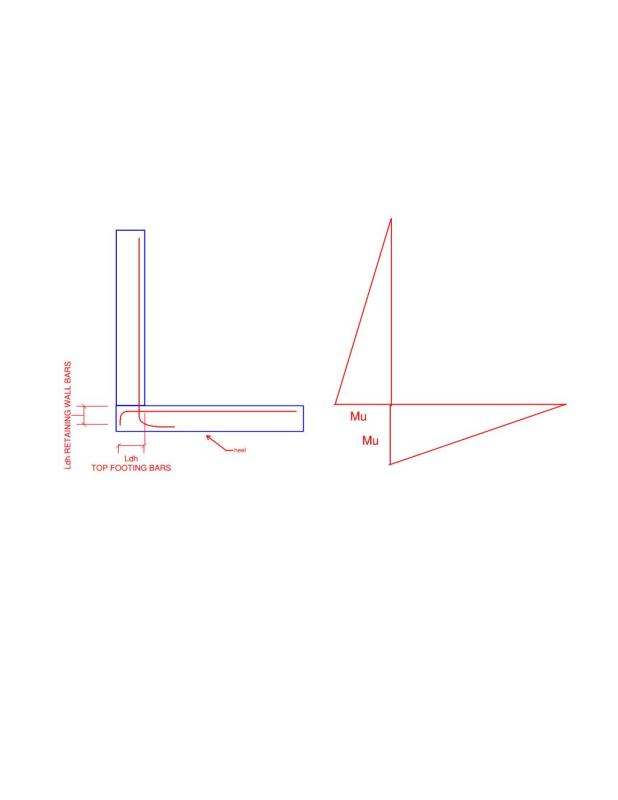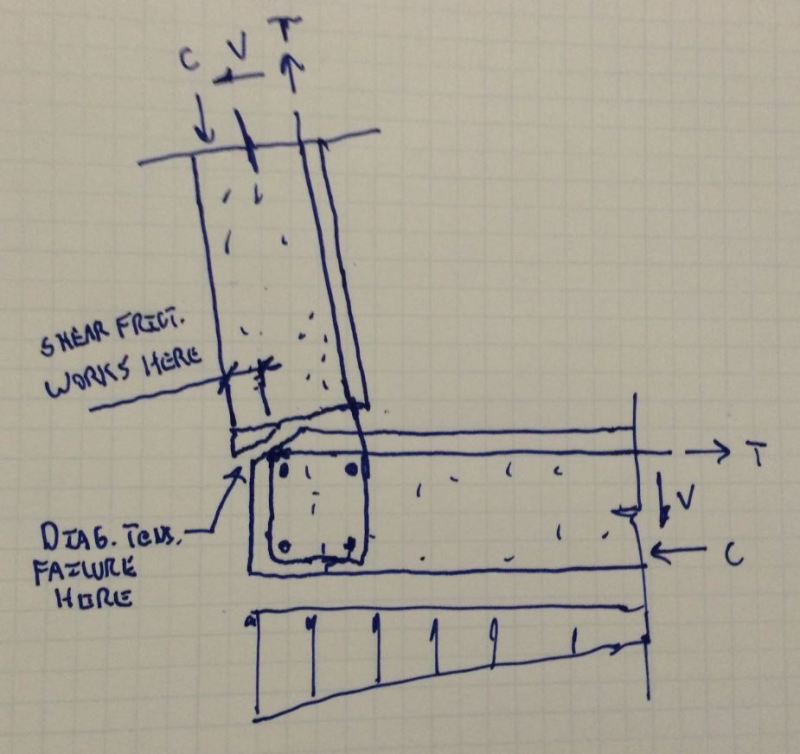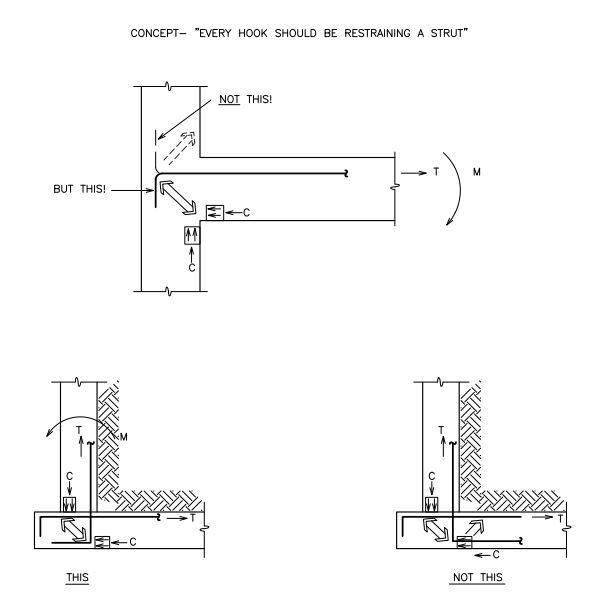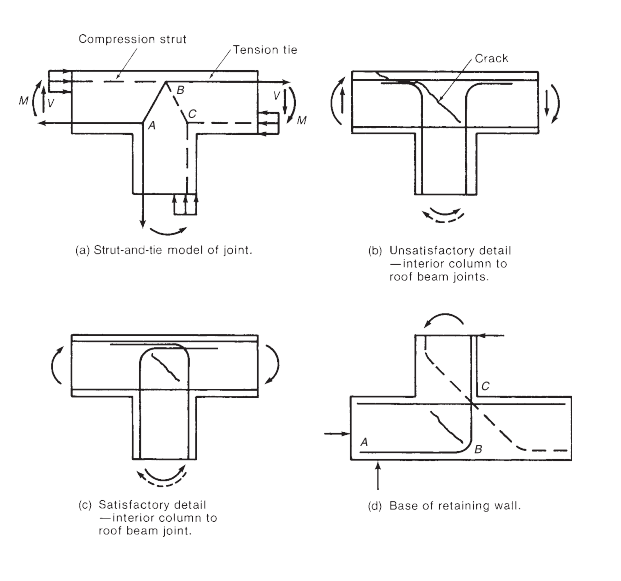msdmoney
Structural
- Sep 13, 2006
- 19
I've been working through some retaining wall details for a project that requires a condition with a footing without a toe and a footing without a heel. I'm curious on how others detail the wall to footing joint.
For a T-shaped footing, I typically detail per the CRSI manual, developing the toe bars and extending up into the stem. I will often omit the diagonal for shorter walls. If the toe is too short to fully develop, I hook the "O" bar.
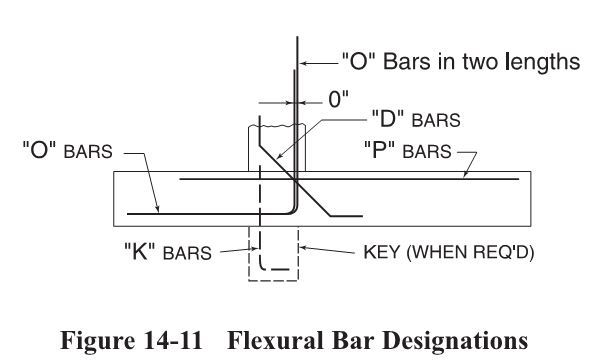
For the L-shaped footing, when there is no toe and only one curtain of reinforcing in the stem, I'm looking at the best way to detail to fully develop the joint moment at the corner.The "O" bars would need to turn the other direction into the bottom of the heel in order to develop. Since the heel bars can't develop into a toe, my inclination is to turn them upward and develop into the wall.
I've been looking at some of the plan corner detailing conditions shown in Concrete International's detailing corner.

For a T-shaped footing, I typically detail per the CRSI manual, developing the toe bars and extending up into the stem. I will often omit the diagonal for shorter walls. If the toe is too short to fully develop, I hook the "O" bar.

For the L-shaped footing, when there is no toe and only one curtain of reinforcing in the stem, I'm looking at the best way to detail to fully develop the joint moment at the corner.The "O" bars would need to turn the other direction into the bottom of the heel in order to develop. Since the heel bars can't develop into a toe, my inclination is to turn them upward and develop into the wall.
I've been looking at some of the plan corner detailing conditions shown in Concrete International's detailing corner.


